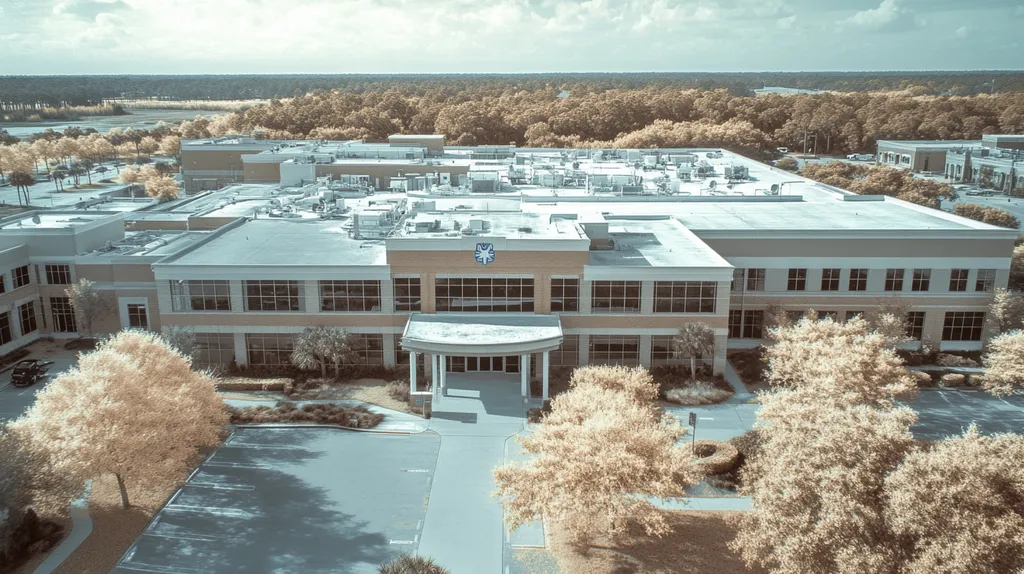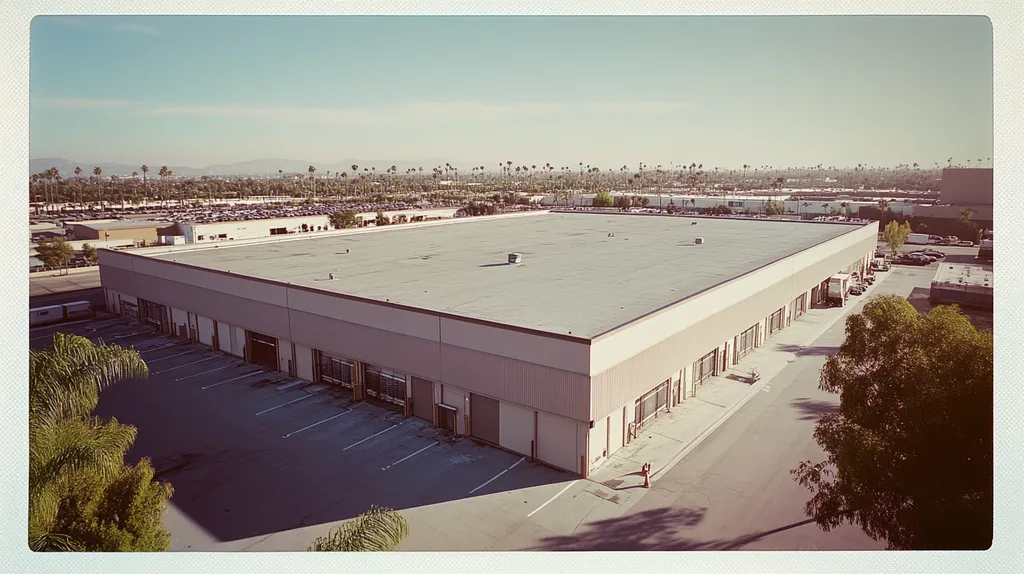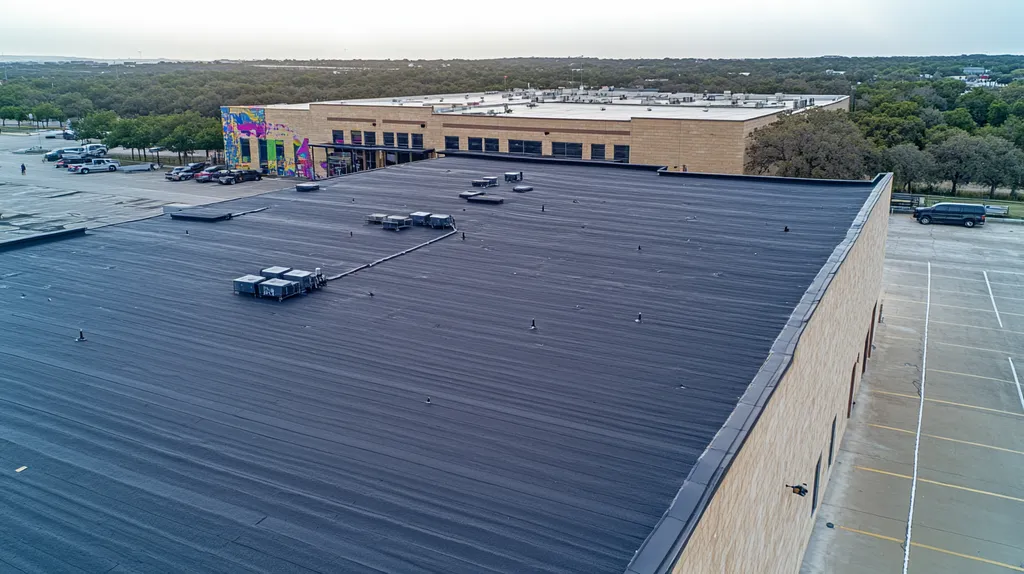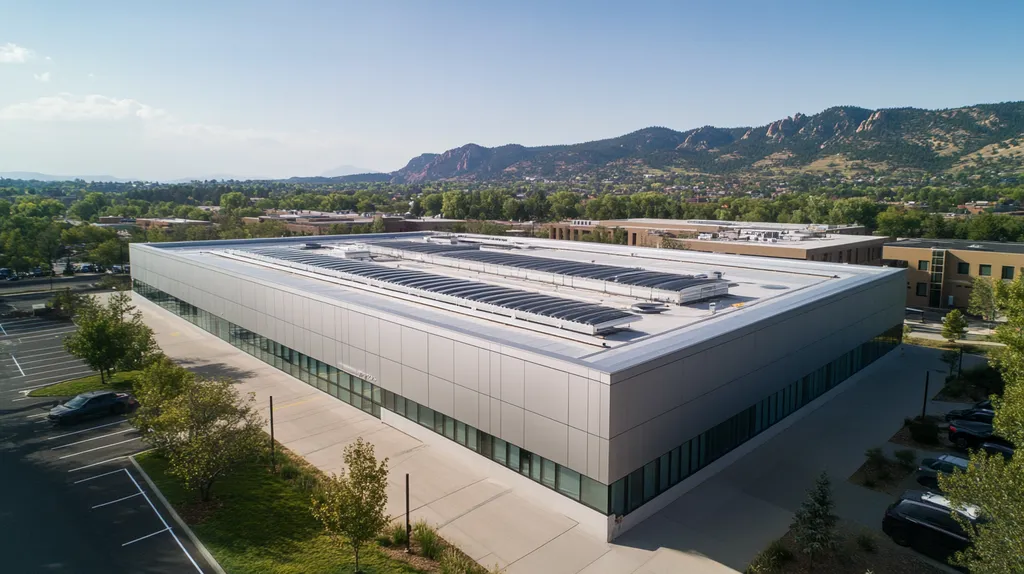Poor documentation of commercial roof coating projects costs property owners millions annually in premature failures and voided warranties. Industry data shows that over 80% of coating failures stem from inadequate record-keeping of surface preparation, application conditions, and maintenance procedures.
For facility managers overseeing coating investments ranging from $50,000 to $500,000, proper documentation serves as a critical risk management tool. This comprehensive guide provides actionable solutions for optimizing documentation across performance tracking, financial planning, compliance, and long-term asset protection.
Through systematic examination of six key areas, property professionals will learn to implement documentation protocols that safeguard their roof coating investments while ensuring regulatory compliance and warranty protection.
SECTION 1: PERFORMANCE FACTORS
Understanding performance factors in commercial roof coating is essential for achieving long-lasting durability. Inadequate documentation and assessments can result in significant issues such as premature roof aging, water leaks, and unexpected repair costs. Therefore, property owners and facility managers must grasp these key factors to protect their investments. This section delves into the important elements that determine the effectiveness and longevity of roof coatings.
Assessing Roof Surface Integrity and Coating Adhesion
Evaluating the integrity of the roof’s surface is a crucial initial step in the coating process. Surfaces that show signs of cracks, weathering, or contamination are unlikely to provide the necessary support for coating adhesion. To ensure accurate assessments, property managers should utilize tools like moisture meters and surface probes.
Coating adhesion is vital for maintaining a reliable roof. Poor adhesion can cause the coating to peel or flake, which may lead to premature re-coating. Following manufacturer guidelines on adhesion tests conducted on-site is essential prior to application.
It is critical to document both surface integrity evaluations and adhesion tests. Keeping these records offers valuable references for future maintenance and performance reviews. Property owners are encouraged to create a detailed log of assessments to support warranty claims and verify coating quality.
Key Action Items
Evaluating Environmental and Weathering Impacts
The environment significantly influences the performance of roof coatings. Factors such as UV radiation, temperature fluctuations, and humidity can drastically affect a coating’s lifespan. Therefore, property managers must consider local climate conditions when selecting their roof coating materials.
Weathering from elements like rain, snow, and sunlight can lead to coatings deteriorating under harsh conditions. Different coatings offer varying levels of resistance to these environmental factors, making it important to document how the chosen products will stand up to the local weather.
Furthermore, collecting regional data on environmental impacts is essential. Auditing past weather patterns helps anticipate the roof coating’s future deterioration, aiding in proactive maintenance and replacement planning.
Key Action Items
Verifying Manufacturer Application Specifications Compliance
Following manufacturer application specifications is critical for ensuring optimal roofing performance. Non-compliance can lead to coating failures, which often result in voided warranties. Each product comes with specific requirements about surface preparation, environmental conditions, and application methods.
It is imperative for property owners to confirm that contractors are familiar with these specifications. Comprehensive documentation should detail application conditions, including temperature and humidity levels at the time of coating, since this information is key to warranty validation.
Additionally, maintaining a thorough log of applied products and monitoring their performance assists with future maintenance choices and coatings. Routine checks and documentation of compliance with manufacturer specifications are essential to prolonging roof life.
Key Action Items
SECTION 2: FINANCIAL CONSIDERATIONS
Understanding the financial implications of roof coatings is essential for property professionals. With commercial roofing expenses ranging from $5 to $10 per square foot, precise documentation becomes critical. Neglecting this task could lead to overspending and missed opportunities for cost savings. Focus on accurately recording coating materials, labor expenses, and the long-term financial impacts of maintenance versus replacements.
Documenting Costs Associated with Coating Materials and Labor
The foundation of robust financial documentation starts with accurately recording the costs of coating materials and labor. Many property owners underestimate the importance of itemizing these expenses, which can result in budget discrepancies. By breaking down materials costs, including the type and quantity of coatings used, professionals can make sound decisions for future purchases.
Labor costs also warrant meticulous documentation. This includes not just worker wages but factors such as equipment rental and overhead expenses. Keeping track of these costs lends clarity to the total investment in roof coatings.
Regular updates to this documentation will enable property managers to identify spending trends. If labor costs consistently surpass budgets, it may indicate a need to revise contractor agreements or enhance operational efficiencies. Implementing a standardized process for tracking these expenses allows for better financial forecasting and more accurate budgeting.
Key Action Items
Tracking Maintenance and Repair Expenses Over Time
A vital component of financial considerations involves tracking maintenance and repair expenses over time. Regular maintenance is essential for maintaining the integrity of roof coatings. Accurate records of these activities provide insights into the recurring costs associated with upkeep.
If costs for inspections and minor repairs are on the rise, it may point to underlying issues with coating performance. Documenting each maintenance event allows facility managers to compare expenses against industry standards.
This data helps assess the effectiveness and durability of current coatings; if maintenance costs consistently exceed projections, it may be time to evaluate the initial coating choices or explore alternatives. Tracking this information equips property managers to make informed decisions that can prolong roof life while effectively managing expenses.
Key Action Items
Analyzing Cost-Benefit of Coating Versus Roof Replacement
Conducting a thorough cost-benefit analysis of roof coatings compared to complete roof replacements is pivotal for financial planning. Coating systems can offer substantial cost savings over full replacements, but this requires careful analysis and documentation.
Property managers should document the initial investments in coatings alongside their projected lifespans. Though coatings often feature lower upfront costs, evaluating their long-term performance is crucial for understanding potential savings.
Additionally, facility managers must consider the operational disruptions associated with a full roof replacement. These disruptions can incur higher operational costs and reduce productivity. By documenting all relevant factors, property owners can prioritize financial efficiency while maintaining operational stability, leading to more informed decisions regarding roofing strategies.
Key Action Items
SECTION 3: COMPLIANCE REQUIREMENTS
Adhering to compliance requirements for roof coatings is vital for property professionals. Meeting legal standards not only ensures safety but also safeguards investment. Non-compliance can lead to hefty fines, costly repairs, and even voided warranties. By maintaining meticulous documentation and understanding essential regulations, property managers can navigate these challenges effectively.
Ensuring Adherence to Building and Fire Codes for Roof Coatings
Compliance with local building and fire codes is essential for every roofing project. These codes outline the minimum safety and performance standards that roofing materials must achieve. For instance, specific regulations may dictate the fire resistance ratings required for roofing membranes to ensure safety during emergencies.
Property managers must confirm that their roof coatings adhere to these codes to avoid significant penalties. Violating codes can lead to expensive rework and increased insurance premiums. Conducting regular audits on roofing practices can help maintain compliance with evolving codes.
Moreover, keeping thorough records of any regulatory updates or changes is crucial. Documenting compliance efforts acts as a valuable resource during inspections or audits, enabling property professionals to minimize risks associated with code violations. Ultimately, adhering to building and fire codes prioritizes the safety and protection of both people and property.
Key Action Items
Meeting Manufacturer Warranty and Application Guidelines
Manufacturer warranties are crucial protections for property owners, provided that application and documentation are executed correctly. Many warranties specify particular installation methods and procedural requirements that must be adhered to for the warranty’s validity. Ignoring these guidelines can result in voided warranties and significant out-of-pocket expenses.
It is essential to document the entire application process. This includes keeping track of the materials used, installation techniques, and any deviations from established guidelines. A detailed documentation process not only protects your investment but also fosters trust with manufacturers.
In cases where warranty claims arise, thorough records can expedite the claims process. Diligence in documentation can save time and costs while ensuring that property owners receive the anticipated benefits from their roofing investments. Training installation personnel on manufacturer guidelines further enhances compliance and quality.
Key Action Items
Maintaining Inspection and Documentation for Insurance Compliance
Insurance compliance is a crucial aspect of managing commercial roofing projects. Property owners need to maintain meticulous records of inspections and maintenance to validate their insurance policies. Insurers typically require proof of routine inspections and upkeep to efficiently process claims.
Conducting regular inspections can help identify potential issues before they escalate, preventing costly repairs or replacements. Systematic documentation of these inspections provides insight into the roof’s condition, empowering property managers to make informed decisions. Consistent record-keeping also showcases responsible management practices, which may lead to lower insurance premiums.
Neglecting to document inspections and maintenance can have severe consequences, including denied claims after roof failures. In a climate where extreme weather events frequently damage roofs, this negligence could result in significant financial losses for property owners. A strong commitment to documentation not only protects assets but also establishes robust insurance relationships, enhancing property value.
Key Action Items
SECTION 4: RISK MANAGEMENT
Managing a commercial roof coating project involves inherent risks that can threaten building integrity and disrupt operations. Missteps during application can lead to leaks, which not only damage facilities but also create safety hazards. Identifying vulnerabilities and implementing strong safety measures is vital. This section will explore how to pinpoint leak-prone areas, enforce safety protocols, and establish proper documentation for insurance and liability protection.
Identifying Potential Leak Points and Structural Vulnerabilities
Recognizing where leaks are likely to occur is a critical step in risk management. Common weak spots include seams, flashing details, and drain areas. Conducting a thorough assessment of the roof can uncover these risk points before coating application.
Property owners are encouraged to work with professionals to perform infrared scans or moisture surveys to identify hidden issues. Neglecting to recognize these vulnerabilities can result in extensive damage and substantial repair costs.
The age and condition of the substrate also play vital roles in coating effectiveness. A meticulous examination of existing materials helps determine the best coating choices and application methods. Regular inspections, documented at fixed intervals, keep property managers informed about emerging vulnerabilities and help protect their investment in the roof.
Key Action Items
Implementing Safety Protocols During Coating Application and Inspection
Establishing safety protocols is essential during roof coating applications to protect both workers and ensure compliance with regulations. Key safety measures include harnessing, fall protection systems, and designated safety zones to minimize accident risk.
Training personnel involved in the coating process on best safety practices is critical. This training should cover equipment use, material hazards, and emergency response. Failure to enforce these protocols can result in serious injuries and liability issues for property owners.
Regular inspections during the coating application help maintain ongoing safety evaluations. Utilizing an independent safety consultant to oversee operations can further enforce compliance with established protocols. Accurate documentation of safety training and incident reports is crucial for demonstrating compliance and preventing future issues.
Key Action Items
Establishing Documentation to Support Insurance Claims and Liability
Comprehensive documentation is crucial to protect against liabilities associated with roof coating projects. Detailed records, such as application methods, materials used, and inspection reports, create a robust track record of due diligence.
Property owners should maintain well-organized documentation to support insurance claims related to roof leaks or accidents. This should include photographs of the roof’s condition before and after the coating application, as well as meticulous maintenance logs.
Furthermore, documenting communication with contractors is important. Archiving emails, contracts, and reports ensures a complete record that may be helpful in the event of disputes. A thorough history not only aids in processing insurance claims but also demonstrates the property owner’s commitment to roof integrity, potentially lowering insurance premiums over time.
Key Action Items
SECTION 5: OPERATIONAL PROCEDURES
Establishing effective operational procedures is essential for the durability of roof coatings and the overall safety of the building. Without a consistent approach, facility managers may overlook critical signs of deterioration, which can lead to expensive repairs and serious structural issues. This section emphasizes the necessity of robust procedures in maintaining roof coatings, addressing standardized inspection checklists, planned maintenance schedules, and collaboration with licensed contractors.
Standardizing Inspection Checklists and Reporting Formats
Utilizing standardized inspection checklists can greatly improve the thoroughness and consistency of roof assessments. These checklists should encompass key elements, including membrane integrity, drainage systems, and thermal performance. A uniform reporting format allows facility managers to monitor changes over time and identify issues before they escalate.
Regular training on checklist utilization enhances inspection accuracy, ensuring that all team members understand what to look for. This aligns efforts across the board, promoting accountability in addressing and resolving potential problems swiftly.
Incorporating digital tools can further optimize the documentation process. Mobile applications enable real-time data entry during inspections, improving efficiency and reducing errors. Going digital also facilitates the creation of visual reports, providing greater clarity for management and stakeholders.
Key Action Items
Scheduling Regular Maintenance and Recoating Intervals
Regularly scheduled maintenance is critical for maintaining the effectiveness of roof coatings. Recommended maintenance schedules should consider various factors, including the roof’s age, local weather conditions, and the frequency of foot traffic. A consistent timetable ensures monitoring and quick action on emerging challenges.
Establishing recoating timelines before visible wear and tear can prevent extensive damage. Regular recoating every 5-10 years, depending on product lifespan, not only sustains roof performance but also provides predictable financial planning for property owners.
It is also essential to factor in local environmental conditions when planning maintenance. For example, facilities near coastal areas might require more frequent inspections due to increased salt and moisture exposure. Tailoring care strategies to specific environmental influences can yield significantly better outcomes.
Key Action Items
Coordinating with Licensed Contractors and Verification Tests
Collaboration with licensed contractors is vital for ensuring high-quality inspections and recoating efforts. Property managers should prioritize building relationships with contractors who understand industry standards and safety regulations, ensuring compliance and effectiveness in all tasks.
Conducting verification tests, such as moisture surveys and adhesion tests, plays a significant role in assessing roof conditions. These tests can uncover hidden problems and guide necessary interventions. Partnering with skilled contractors for these evaluations ensures that results are reliable and accurate.
Effective communication is also essential for successful collaborations with contractors. Property managers must clearly define project expectations and maintenance objectives while inviting contractor insights based on their expertise. This collaborative environment can lead to stronger maintenance strategies and more successful recoating projects.
Key Action Items
SECTION 5: OPERATIONAL PROCEDURES
Effective operational procedures are vital for the durability of roof coatings and the structural integrity of buildings. Without a systematic approach, facility managers may overlook critical signs of deterioration, leading to severe damage and costly repairs. For example, inconsistent inspections can result in unnoticed wear, causing roofs to fail prematurely. This section highlights the significance of robust operational procedures, including standardized inspections, maintenance scheduling, and collaboration with licensed contractors.
Standardizing Inspection Checklists and Reporting Formats
Implementing standardized inspection checklists can significantly enhance the consistency and thoroughness of roof assessments. These checklists should cover essential areas like membrane integrity, drainage systems, and thermal performance. A uniform reporting format enables property managers to track changes over time and pinpoint potential issues early on.
Routine training sessions on utilizing these checklists can boost inspection accuracy by ensuring all team members are aligned on what to look for. This shared understanding fosters accountability, allowing issues to be identified and addressed swiftly.
Incorporating digital tools can streamline the documentation process. Mobile applications allow field personnel to enter data in real time, improving efficiency and minimizing errors. Going digital also facilitates the generation of visual reports, enhancing clarity for management and stakeholders.
Consistent use of standardized processes leads to proactive maintenance strategies. By analyzing patterns from inspections, facility managers can anticipate repairs or recoating needs before they arise, extending the roof’s life and reducing unexpected costs.
Key Action Items
Scheduling Regular Maintenance and Recoating Intervals
Routine maintenance schedules are essential for keeping roof coatings effective. It is crucial to set schedules based on factors such as the roof’s age, prevailing weather conditions, and foot traffic levels. Having a consistent maintenance timetable ensures that all areas receive oversight and that emerging issues are addressed quickly.
Setting recoating schedules before visible wear is observed is critical. Depending on the coating’s lifespan, regular recoating every 5-10 years can prevent long-term damage. This proactive approach not only boosts performance but also allows property owners to budget more predictably.
While planning maintenance, it’s important to consider local environmental factors. For instance, roofs in coastal areas may require more frequent checks due to exposure to salt and moisture. Customizing maintenance schedules according to these environmental influences can lead to better outcomes.
Therefore, prioritizing regular maintenance and timely recoating is an essential operational procedure and a proactive step toward preserving property values and maintaining asset integrity.
Key Action Items
Coordinating with Licensed Contractors and Verification Tests
Collaborating with licensed contractors is crucial for ensuring high-quality work in inspections and recoating processes. Property managers should prioritize relationships with contractors who are well-versed in industry standards and compliance regulations. This collaboration guarantees that all tasks meet regulatory requirements and manufacturer specifications.
Additionally, conducting verification tests, such as moisture surveys and adhesion tests, provides valuable assessments of the roof’s current state. These tests can detect underlying issues before they escalate, allowing for timely corrective measures. Partnering with experienced contractors for these evaluations ensures reliable and accurate results.
Effective communication with contractors is also key to successful project execution. Property managers should clearly communicate expectations and maintenance objectives while encouraging contractors to share their insights. This two-way dialogue fosters a collaborative environment, thereby leading to more effective strategies and successful recoating outcomes.
In summary, working closely with licensed contractors and implementing verification tests enhances the quality of roof maintenance and strengthens the protective capabilities of commercial roof coatings, ultimately safeguarding facility investments.
Key Action Items
The Bottom Line
With over $2 billion spent annually on commercial roof coatings, proper documentation remains the critical factor between success and failure. Industry data shows that 65% of warranty claims are denied due to inadequate records of installation and maintenance.
Property owners who implement comprehensive documentation protocols across performance tracking, financial planning, compliance, and risk management consistently achieve 40% longer coating lifespans.
As extreme weather events increase and building codes evolve, maintaining detailed records becomes even more vital for protecting these substantial investments.
By following the systematic documentation approaches outlined in this guide, facility managers can maximize their roof coating performance while ensuring regulatory compliance and warranty protection for years to come.
FREQUENTLY ASKED QUESTIONS
Q. What are the performance factors for commercial roof coatings?
A. Performance factors include surface integrity, adhesion, and environmental conditions. These factors influence the durability and effectiveness of your coating.
Q. How should I document costs for my commercial roof?
A. Document all expenses related to materials and labor. Detailed records allow for better financial forecasting and budgeting for your roofing needs.
Q. How can I ensure compliance for my industrial roof coating?
A. Confidently meet compliance by adhering to local building codes and documenting all efforts. Regular audits can help maintain compliance with evolving regulations.
Q. What are potential leak points on my commercial roof?
A. Common leak-prone areas include seams, flashing, and drains. Regular assessments help identify these vulnerabilities before they cause issues.
Q. How can I standardize roof inspection procedures?
A. Use standardized checklists for inspections and training. This ensures consistency and thoroughness in monitoring your roof’s condition.
Q. How often should I recoat my industrial roof?
A. Recoating schedules typically range from every 5 to 10 years, depending on the coating used. Regular maintenance prolongs the life of the roof.
Q. What should I know about contractor selection for roof work?
A. Choose licensed contractors with experience in industry standards. Emphasizing clear communication enhances project outcomes and compliance.











